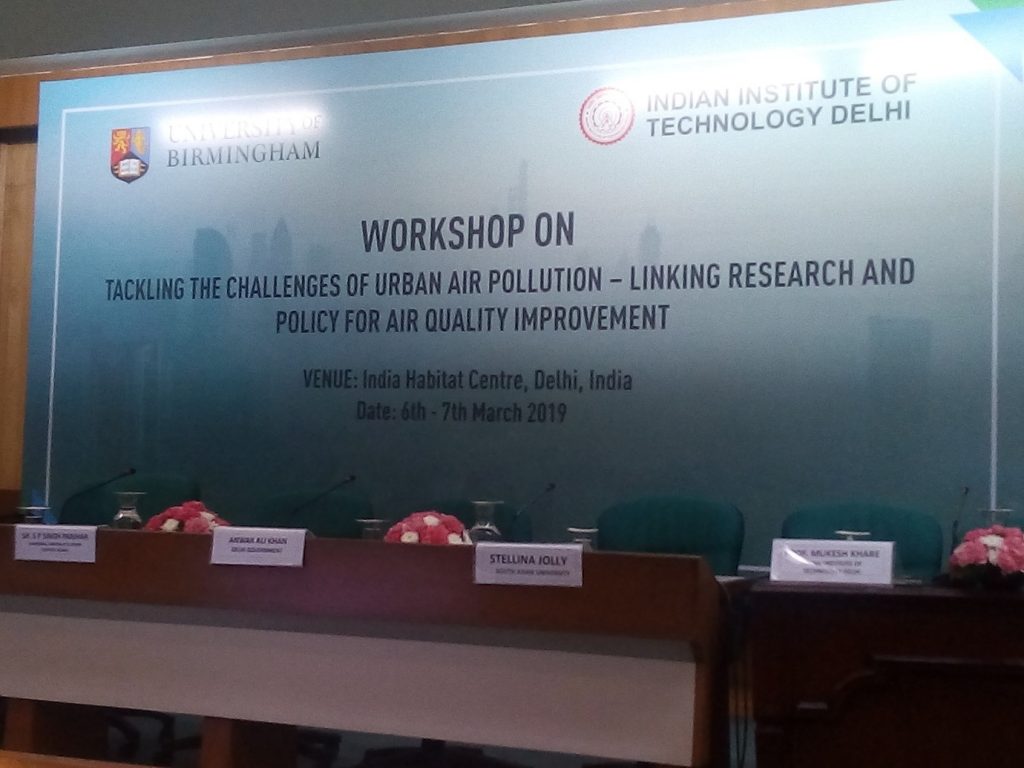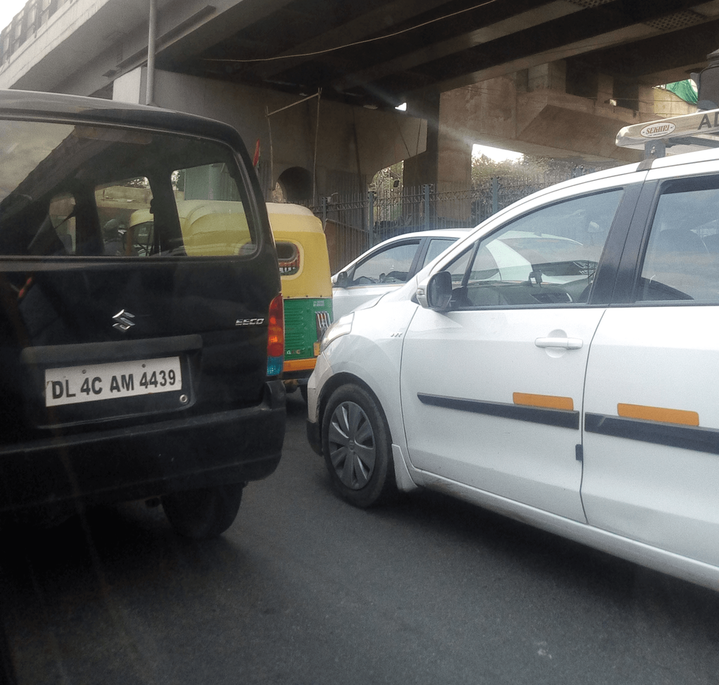 Air pollution is a major global challenge that is responsible for 1 in 10 deaths and has been estimated to cost US$5.1 trillion. Last week I was in New Delhi participating in a workshop to explore the challenges of urban air pollution co-organised by the University of Birmingham with the Indian Institute of Technology Delhi. The workshop brought together representatives from local and national governments, academics, civil society and the international development community. The location of the workshop is important. Delhi is both the greenest city but also currently holds the title as the world’s most polluted city. It is worth noting that air pollution, the invisible killer, is a major problem for cities like Delhi, but is a challenge being experienced by all cities, large and small.
Air pollution is a major global challenge that is responsible for 1 in 10 deaths and has been estimated to cost US$5.1 trillion. Last week I was in New Delhi participating in a workshop to explore the challenges of urban air pollution co-organised by the University of Birmingham with the Indian Institute of Technology Delhi. The workshop brought together representatives from local and national governments, academics, civil society and the international development community. The location of the workshop is important. Delhi is both the greenest city but also currently holds the title as the world’s most polluted city. It is worth noting that air pollution, the invisible killer, is a major problem for cities like Delhi, but is a challenge being experienced by all cities, large and small.
 Air pollution is an invisible killer. In Delhi one in every three children has reduced lung capacity. Air pollution is an important but often unacknowledged killer. On death certificates, the cause of death is never air pollution but often the cause is directly related to continued exposure to air pollution. The health and economic consequences of air pollution are not fully understood. Ongoing research is beginning to explore the relationship between air pollutants and cognition including impacts on educational attainment. Thus, air pollution is also contributing to educational under-performance. It is also an unacknowledged component in reducing economic performance, development, growth and productivity. Thus, localised productivity issues may be directly linked to the health and cognitive impacts on health. Air pollution “is not just a health risk but also a drag on development…By causing illness and premature death, air pollution reduces the quality of life. By causing a loss of productive labour, it also reduces incomes” (World Bank and IHME, 2016).
Air pollution is an invisible killer. In Delhi one in every three children has reduced lung capacity. Air pollution is an important but often unacknowledged killer. On death certificates, the cause of death is never air pollution but often the cause is directly related to continued exposure to air pollution. The health and economic consequences of air pollution are not fully understood. Ongoing research is beginning to explore the relationship between air pollutants and cognition including impacts on educational attainment. Thus, air pollution is also contributing to educational under-performance. It is also an unacknowledged component in reducing economic performance, development, growth and productivity. Thus, localised productivity issues may be directly linked to the health and cognitive impacts on health. Air pollution “is not just a health risk but also a drag on development…By causing illness and premature death, air pollution reduces the quality of life. By causing a loss of productive labour, it also reduces incomes” (World Bank and IHME, 2016).

A key challenge facing policy-makers and academics revolves around understanding the drivers and processes that support sustainable economic development or growth. Air pollution must play a central role in any discussion. A key tension is between growth, sustainability and inclusive prosperity. Thus, should the primary policy driver be focussed on growth and development or on inclusive prosperity? The problem is that too often growth and development is associated with a major uplift in all types of environmental pollution. An important policy challenge is that those that are most exposed tend to be the most vulnerable individuals and communities. This highlights the difficulties in balancing growth-based strategies with a focus on ensuring that no one is left behind. All this suggests that the policy and academic focus should shift away from growth and development towards a debate on implementing strategies based on ‘responsible inclusive prosperity’ (RIP). The addition of responsibility to this discussion highlights the need to appreciate trade-offs between interventions that might reduce air quality but create a short-term uplift in economic growth. The evidence suggests that economic growth is directly linked to an increase in air pollution. Thus, any economic strategy that results in an increase in air pollution should be considered as irresponsible. Alternatively, a RIP strategy must be based on clean growth and an appreciation that such a strategy will come with economic benefits.

The key academic and policy challenges are:
- Identifying the major sources of air pollution including emergent sources.
- The sources include road traffic, construction, household activity and farming.
- The health impacts including impacts on cognition.
- The consequences of air pollution on health care including the wider impacts.
- The direct and indirect economic impacts. These include major impacts on productivity. It is possible to argue that across the UK that air pollution is one of the invisible factors in localised differences in productivity.
- Understanding the extent and impacts of air pollution. Air pollution is a major problem in both large and small and medium-sized cities. Any agglomeration of socio-economic activity is associated with air pollution and will require the implementation of an integrated approach to air quality.
- To appreciate the social and economic benefits of strategies that enhance air quality, or the clean air dividends, including increases in cognition, educational attainment, economic inclusion and productivity.
- Developing and implementing solutions.
Developing solutions to air pollution is a complex policy challenge as all solutions must:
- Develop a transboundary approach. Policy must be at a city-region level, but more importantly, must be developed to cover the geography of air movements and pollutants. For a city like Delhi, this includes air pollutants that come from far away.
- The development of an integrated approach. Air quality must be a cross-cutting theme across all national, regional and local policies. The danger is to silo air quality to air quality policies and strategies as this does not address causes.
This blog was written by Professor John Bryson, City-REDI, University of Birmingham.
Disclaimer:
The views expressed in this analysis post are those of the authors and not necessarily those of City-REDI or the University of Birmingham.
To sign up for our blog mailing list, please click here.
